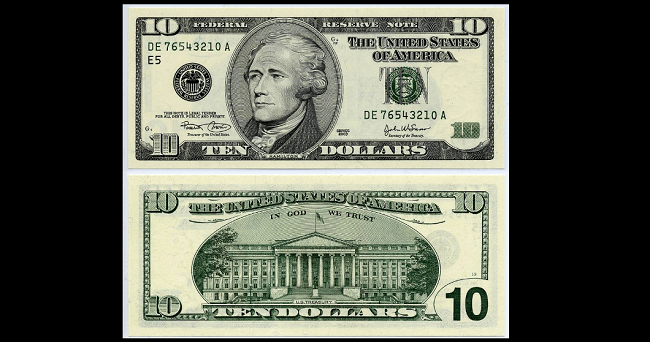2003 10 Dollar Bill Value – Like most people, you probably have a few old bills lying around your house. While you may not think twice about them, some of these seemingly insignificant pieces of paper currency could actually hold a significant amount of value. One such example is the 2003 10 dollar bill.
May seem like just a regular 10 dollar bill, certain factors can determine its worth.
In this blog post, we’ll explore the 2003 10 dollar bill value and how much you can potentially make from this valuable piece of paper currency.
Most 2003 ten dollar bills aren’t very valuable, but don’t despair just yet! There is still a chance that your bill could be worth more than its face value. One key factor to look out for is star notes.
These are replacement bills that the United States Federal Reserve printed and they can be quite rare and valuable.

2003 10 Dollar Bill Specifications
The 2003 $10 bill, also known as a Federal Reserve Note, holds some interesting specifications that can affect its value. First, let’s start with the denomination – $10.00 USD.
This means that the bill represents a ten-dollar value in the United States currency.
The type of this bill is a Federal Reserve Note, which is the most common type of paper currency in circulation.
The signature combinations on the 2003 $10 bill, you will find the names Marin and Snow. These signatures represent the individuals who were serving as the Secretary of the Treasury and Treasurer of the United States at the time of the bill’s production.
The series of this bill is identified as “One: 2003”. This indicates that it belongs to the first series of bills printed in the year 2003.
2003 10 Dollar Bill Value
When it comes to the value of the 2003 $10 bill, there are a few things to keep in mind. First of all, if your bill is in circulated condition, it won’t be worth more than its face value of $10. However, if you have an uncirculated bill, it can sell for a premium.
In particular, the 2003 series $10 bills, in uncirculated condition with a grade of MS 63, are typically worth around $20.
But there’s more! If your bill was issued from the Federal Reserve Bank of Minneapolis, its value can increase to around $40 in uncirculated condition with a grade of MS 63.
But wait, there’s even more potential for profit! Star notes, which are replacement bills printed by the United States Federal Reserve, can be quite rare and valuable. If you happen to have a star note from the 2003 series, in uncirculated condition with an MS 63 grade, it could be worth around $50.
And depending on which Federal Reserve Bank issued the star note, the value can be even higher.
For example, star notes from the Federal Reserve Bank of Dallas can be worth around $165, while those from the Federal Reserve Bank of St. Louis can reach values of around $225.
2003 10 Dollar Bill Star Notes
Star notes are like hidden treasures in the world of currency collecting. These replacement bills, printed by the United States Federal Reserve, are much rarer than regular bills, making them more valuable to collectors.
So, how can you determine if you have a star note? It’s as simple as looking at the serial number on your bill. If you see a star symbol at the end of the serial number, congratulations! You have a star note in your possession.
Most 2003 series $10 star notes are worth around $50 in uncirculated condition with an MS 63 grade. However, depending on which Federal Reserve Bank issued the star note, the value can vary.
For instance, star notes from the Federal Reserve Bank of Dallas can be worth around $165, while those from the Federal Reserve Bank of St. Louis can reach values of around $225.
These higher values are due to their rarity and demand among collectors.
It’s a good idea to place it inside a currency holder to protect its value. These holders can help preserve the condition of the bill and keep it safe from any damage or wear.
2003 10 Dollar Bill Grading System
In determining the value of a 2003 $10 bill, the grading system is an important factor to consider. One grade to be aware of is MS 63 choice uncirculated, which indicates that the bill shows no signs of ever having been in circulation.
In other words, it’s in pristine condition, with its original crispness still intact. Additionally, a bill graded MS 63 is well-centered, further adding to its appeal.
So why is this grading system important? Well, when it comes to collecting currency, the condition of the bill plays a crucial role in determining its value.
A 2003 $10 bill in MS 63 choice uncirculated condition is generally more sought after by collectors and can command a higher price.
This is because collectors value bills that have been well-preserved and show no signs of wear or use.
Conclusion
After exploring the value of the 2003 $10 bill, it’s clear that while most of these bills may not hold significant worth, there is still hope for those looking to make a profit.
So, while the 2003 $10 bill may not be worth much on its own, it’s always worth taking a closer look to see if you have a valuable star note in your possession. Remember to place any valuable bills in currency holders to preserve their condition. Happy hunting!
See Also About Other $10 Bills: